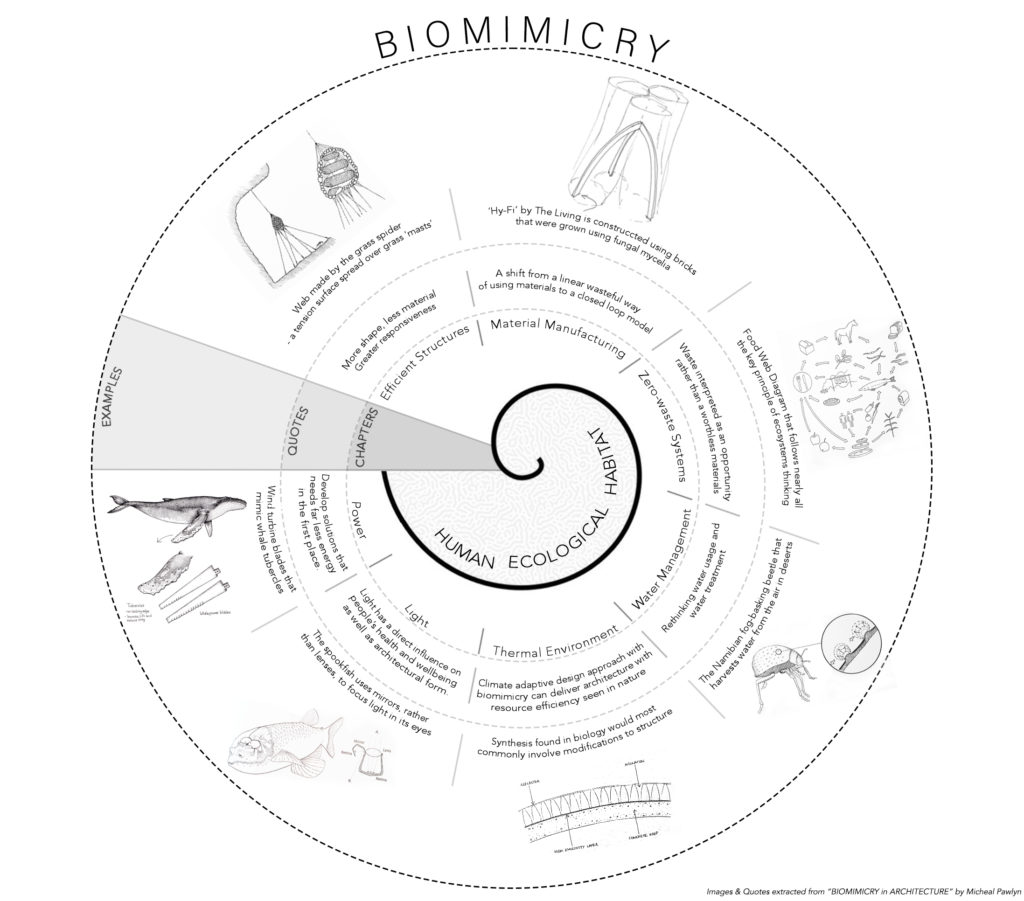This blog is a review of Michael Pawlyn’s book, Biomimicry in Architecture.
“Biomimicry is a powerful innovation tool that allows architects to go beyond conventional approaches to sustainable design and deliver transformative solutions we need.”-Michael Pawlyn

The book “Biomimicry in Architecture” by Michael Pawlyn introduces the term biomimicry and how it can impact architecture. The main aim of the book is to encourage architects and designers to learn energy efficiency from nature, however this should be applied in a rightful manner. Pawlyn insists through all the chapters that we are to be inspired by nature and not to simply imitate it. He states that biomimicry does not necessarily associate itself with aesthetics as much as it can provide functional solutions to energy problems. Pawlyn insists that biomimicry is an innovative tool that has the ability, through architects, to create sustainable designs that can go beyond conventional approaches.
He believes we can impact climate change through:
- Achieving radical increases in resources efficiency
- Shifting from a fossil fuel economy to solar economy
- Transforming from a linear, wasteful way of using resources to a completely closed loop model
The diagram comprises all the 7 chapters covered in the book “Biomimicry in Architecture”. The quotes aligned with every chapter is a reflection of what the chapter encompasses and its main highlight. The outermost circle contains examples of the chapters and how they engage with biomimicry to produce an optimum outcome once merged with architecture. The spiral in the center is a representation of the spiraling nature of biomimicry and how it loops through all the different aspects of energy efficiency in a building. What we learned from the diagram was that when one aspect is impacted, the other portions are affected as well therefore the relationship between the different energy systems is not a linear one but rather an interconnected body. There is a lot to learn from effectively working with biomimicry to deliver sustainable buildings our cities need for an ecological age.

